New date set for 10th NA Symposium

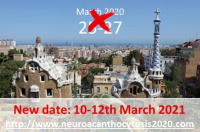 We've now set a new date for our Tenth Symposium on Neuroacanthocytosis in Barcelona on 10-12 March 2021, and we hope you will join us. More information will be published in due course, which you can find on our Facebook page and in future issues of our newsletter. We've now set a new date for our Tenth Symposium on Neuroacanthocytosis in Barcelona on 10-12 March 2021, and we hope you will join us. More information will be published in due course, which you can find on our Facebook page and in future issues of our newsletter.
|
 |  |
Welcome to Issue 34
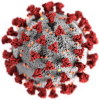 It is our wish that this newsletter finds you in good spirits in spite of the adversity that this global crisis has visited upon the world and our community. These extraordinary times have led to unexpected challenges and unwelcomed disruptions in each of our lives, but hopefully it's also delivered a greater appreciation for our loved ones and for those who enrich our day-to-day lives. It is our wish that this newsletter finds you in good spirits in spite of the adversity that this global crisis has visited upon the world and our community. These extraordinary times have led to unexpected challenges and unwelcomed disruptions in each of our lives, but hopefully it's also delivered a greater appreciation for our loved ones and for those who enrich our day-to-day lives.
We greatly hope that you have been spared the most serious effects of this outbreak and that you have been able to access important and resources through your medical health care professionals and community. For those seeking more information, you may find a visit to rare disease organisation websites helpful.
It is our wish that this newsletter finds you in good spirits in spite of the adversity that this global crisis has visited upon the world and our community. These extraordinary times have led to unexpected challenges and unwelcomed disruptions in each of our lives, but hopefully it's also delivered a greater appreciation for our loved ones and for those who enrich our day-to-day lives.
We greatly hope that you have been spared the most serious effects of this outbreak and that you have been able to access important and resources through your medical health care professionals and community. For those seeking more information, you may find a visit to rare disease organisation websites helpful.
For example, the National Organization for Rare Disorders (NORD) posts this guidance. This piece is dated March 5, 2020 and as we know new advice on Covid-19 is rapidly changing, such as on the recommended use of face coverings. However, the article helpfully includes update links to the CDC, FDA, NIH and WHO.
EURORDIS – Rare Diseases Europe, has also posted information. Remember also, that if you are feeling the effects of isolation particularly acutely at this time, you can begin or join in on discussions with the NA community through RareConnect.org by clicking the Our Patients tab on our website (www.naadvocacy.org).
Here at the Advocacy, we are grappling with the postponement of several eagerly awaited events. Specifically, the 10th International Meeting on Neuroacanthocytosis in Barcelona, Spain, where we expected to enjoy the company of several patients, family members and caretakers while learning about new developments in NA scientific research, as well as the Parallel Windsor and ASICS 10K London events, both of which promised a full day of challenges and fun. The latter two events also would have raised needed funds to assist the Advocacy in its mission. Fortunately, many people are hard at work with plans to reschedule these events for 2021 as we continue to work in support of our important cause.
Finally, we send our best wishes to all our wonderful patients, families and caretakers. We wish you much courage and strength as we navigate through these difficult times to a hopefully more healthy and enlightened tomorrow. Stay safe!
 |  |
Dr. Jae-Sook Park awarded £5,000 Glenn Irvine Prize
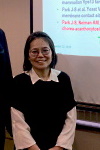 The Advocacy has now awarded GBP 5,000 to the worthy recipient of the first Glenn Irvine Prize, Dr Jae-Sook Park from Dr. Aaron Neiman’s lab at Stony Brook, Long Island, NY, USA, who has devoted herself to expanding knowledge of the VPS13 protein, the function of which promises to shed critical insight into NA syndromes. The Advocacy has now awarded GBP 5,000 to the worthy recipient of the first Glenn Irvine Prize, Dr Jae-Sook Park from Dr. Aaron Neiman’s lab at Stony Brook, Long Island, NY, USA, who has devoted herself to expanding knowledge of the VPS13 protein, the function of which promises to shed critical insight into NA syndromes.
In addition to recognising an individual for outstanding achievement, the Prize is intended to encourage further work in the study of neuracanthocytosis.
The Advocacy has now awarded GBP 5,000 to the worthy recipient of the first Glenn Irvine Prize, Dr Jae-Sook Park from Dr. Aaron Neiman’s lab at Stony Brook, Long Island, NY, USA, who has devoted herself to expanding knowledge of the VPS13 protein, the function of which promises to shed critical insight into NA syndromes.
In addition to recognising an individual for outstanding achievement, the Prize is intended to encourage further work in the study of neuracanthocytosis.
The presentation of the first Glenn Irvine Prize had been planned for our 10th International Meeting on Neuroacanthocytosis in March. Although the symposium and Dr Park’s presentation of a paper in Barcelona have been unavoidably postponed, the Advocacy did not wish to delay awarding the prize money. Dr Park wrote to say, "I think the only way to show my appreciation to The Advocacy for Neuroacanthocytosis Patients is to study / research hard, hoping that my research helps to improve the quality of patients' lives."
Congratulations Dr. Park! We look forward to learning more from you in the field of NA research at the Meeting in Barcelona next year. Learn more about Dr Park’s many accomplishments in NA News, issue 33.
 |  |
Recognising Rare Disease Day 2020 in London and Warsaw
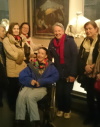 This year Rare Disease Day fell on that very rare day, 29 February 2020. We enclose here two reports of NA Advocacy events, one at the Victoria and Albert Museum in London and the other at the Institute of Biochemistry and Biophysics of the Polish Academy of Sciences. This year Rare Disease Day fell on that very rare day, 29 February 2020. We enclose here two reports of NA Advocacy events, one at the Victoria and Albert Museum in London and the other at the Institute of Biochemistry and Biophysics of the Polish Academy of Sciences.
This year Rare Disease Day fell on that very rare day, 29 February 2020. We enclose here two reports of NA Advocacy events, one at the Victoria and Albert Museum in London and the other at the Institute of Biochemistry and Biophysics of the Polish Academy of Sciences.
In London, to help raise awareness, the NA Advocacy held a special tour at the stunning Victoria and Albert Museum in London entitled "Red, Scarlet, Crimson: The History of Colour in Art," red being symbolic of acanthocytes. Anne Haworth, a lecturer at the V&A as well as other esteemed art museums and galleries including the British Museum, led the tour, which was attended by a group of over a dozen NA Advocacy supporters.
The talk was indeed fascinating as we travelled through various rooms of the museum including those devoted to China, Japan, the Islamic Middle East and Britain, learning of the decorative and historical use of red in jewels, stained glass, carpets, silk and other fabrics.
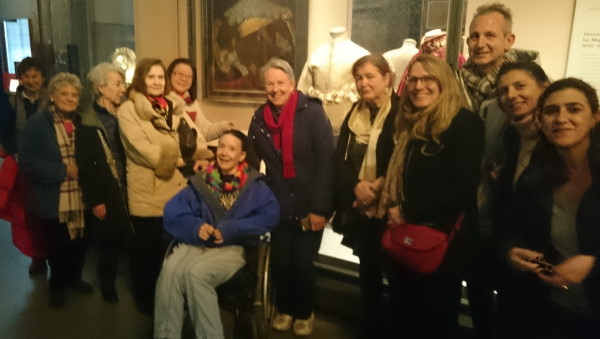
From Poland, Teresa Zoldak writes to tell us that this year, she organised for the third time a Rare Disease Day in Warsaw at the Institute of Biochemistry and Biophysics, Polish Academy of Sciences. "Piotr Soczewka from my lab presented the talk entitled: 'Yeast in the fight against neurodegenerative diseases,'" Teresa said. "This year we had about 80 participants."
We wish to thank all those who took part in Rare Disease Day events for their generous support of the efforts to advance the cause for patients with neuroacanthocytosis.
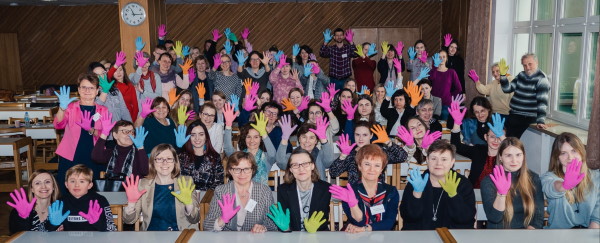
 |  |
Neuroacanthocytosis Advocacy USA holds inaugural meeting
 |
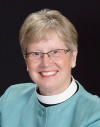 Susan Wagner sends us this report of the newly formed non-profit Neuroacanthocytosis Advocacy USA, Inc. "The organization held their first board meeting on May 15, 2020, via Zoom. All members were in attendance: Joy Willard-Wilford (pictured), Bob Metzger, Dr. Ruth Walker, Ginger Irvine and myself, Susan Wagner. We are a group of patients, caregivers and a research/physician. You will eventually find us on the same website as the original Neuroacanthocytosis Advocacy, sharing the same mission to support patients and their caregivers, in addition to furthering Neuroacanthocytosis research. Susan Wagner sends us this report of the newly formed non-profit Neuroacanthocytosis Advocacy USA, Inc. "The organization held their first board meeting on May 15, 2020, via Zoom. All members were in attendance: Joy Willard-Wilford (pictured), Bob Metzger, Dr. Ruth Walker, Ginger Irvine and myself, Susan Wagner. We are a group of patients, caregivers and a research/physician. You will eventually find us on the same website as the original Neuroacanthocytosis Advocacy, sharing the same mission to support patients and their caregivers, in addition to furthering Neuroacanthocytosis research.
"As a USA Non-Profit 501(c)(3), Neuroacanthocytosis Advocacy USA, Inc, qualifies to apply for USA based grants and participate in fundraising with donations to be tax-exempt. We are still in the starting gate, but as we progress we will keep you posted through the Neuroacanthocytosis Advocacy website and NANews. You may reach us at swagner7523@outlook.com Special thanks to both, Joy Willard-Willford working through the tedious application and the financial processes, and to Ginger Irvine, for the motivation and perspective to form the Neuroacanthocytosis Advocacy USA, Inc."
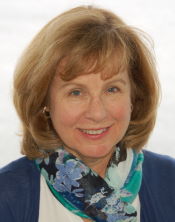 We are pleased to announce the founding of Neuroacanthocytosis Advocacy USA, Inc., a newly designated nonprofit organization dedicated to providing support to patients with neuroacanthocytosis-related diseases and their family and carers. We are pleased to announce the founding of Neuroacanthocytosis Advocacy USA, Inc., a newly designated nonprofit organization dedicated to providing support to patients with neuroacanthocytosis-related diseases and their family and carers.
The organization will also promote awareness of these ultra-rare diseases and actively support research. This is the first such organization in the United States and it will be able to seek US-based grants.
Based in Florida, the organization's founding board members include a patient, family members of patients, and a researcher/physician.
They are Susan Wagner of South Carolina (top photo), Bob Metzger of Minnesota (lower photo), Dr. Ruth Walker of New York, and Joy Willard-Williford of Florida (cover photo).
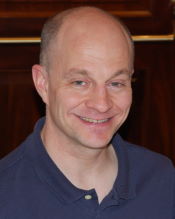 Ginger Irvine is also on the board and provides a critical link to NA Advocacy. It is anticipated that the two organizations will work closely together to further each other's mission. Ginger Irvine is also on the board and provides a critical link to NA Advocacy. It is anticipated that the two organizations will work closely together to further each other's mission.
There is much work still to be done; However the application to the Internal Revenue Service to be a 501(c)(3) organization has just been accepted which allows donations to the organization to be tax-exempt. Stay tuned.
 |  |
RESEARCH UPDATE - Adrian Danek and Gabriel Miltenberger-Miltenyi , Munich ¦ Teresa Zoladek, Poland,
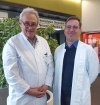 Learn about the recent progress of NA researchers around the world who are investigating the causes, mechanisms and pathology of the NA group of diseases. Learn about the recent progress of NA researchers around the world who are investigating the causes, mechanisms and pathology of the NA group of diseases.
Damian Kolakowski, Joanna Kaminska, Teresa Zoladek, Institute of Biochemistry and Biophysics Polish Academy of Sciences
The Binding of the APT1 Domains to Phosphoinositides Is Regulated by Metal Ions in Vitro
This article was published in Biochim Biophys Acta Biomembr. 2020;1862(9):183349. doi:10.1016/j.bbamem.2020.183349
Chorein is a protein of the Vps13 family, and defects in this protein cause the rare neurodegenerative disorder chorea-acanthocytosis (ChAc). Chorein is involved in the actin cytoskeleton organization, calcium ion flux, neuronal cell excitability, exocytosis and autophagy. The function of this protein is poorly understood, and obtaining this knowledge is a key to finding a cure for ChAc. Chorein, as well as the Vps13 protein from yeast, contains the APT1 domain. Our previous research has shown that the APT1 domain from yeast Vps13 (yAPT1v) binds phosphatidylinositol 3-phosphate (PI3P) in vitro. In this study, we showed that although the APT1 domain from chorein (hAPT1) binds to PI3P it could not functionally replace yAPT1v. The hAPT1 domain binds, in addition to PI3P, to phosphatidylinositol 5-phosphate (PI5P). The binding of hAPT1 to PI3P, unlike the binding of yAPT1v to PI3P, is regulated by the bivalent ions, calcium and magnesium. Regulation of PI3P binding via calcium is also observed for the APT1 domain of yeast autophagy protein Atg2. The substitution I2771R, found in chorein of patient suffering from ChAc, reduces the binding of the hAPT1 domain to PI3P and PI5P. These results suggest that the ability of APT1 domains to bind phosphoinositides is regulated differently in yeast and human protein and that this regulation is important for chorein function.
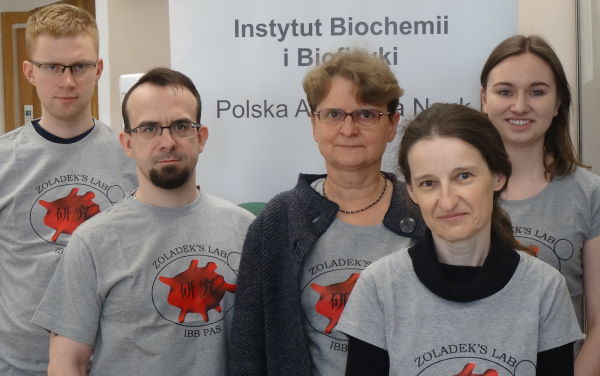
The photo shows the team, From the left, are Piotr Soczewka, Damian Kolakowski, Teresa Zoladek, Joanna Kaminska and Patrycja Waraszka. To read the full paper click here.
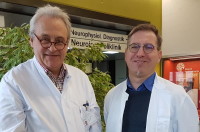
Gabriel Miltenberger-Miltenyi, MD, PhD
Department of Neurology, LMU University, Munich, under the supervision of Professor Dr. Adrian Danek
Search for critical VPS13A mutations in the Munich chorea- acanthocytosis (ChAc) patient cohort, including the revitalization of the chorein Western blot service and ChAc database
Main objectives of the project are: a. Revitalization of the chorein Western blot b. Revitalization of the NA database; c. Genetic analysis of the ChAc-responsible VPS13A gene in blood samples available at LMU.
Results - Revitalization of the chorein Western blot
As mentioned in my 1st Scientific report, I set up a collaboration with Prof. Bettina Schmid at the German Center for Neurodegenerative Diseases (DZNE, Munich) including Ms. Qing Wang, a Masters student through the Graduate School of Systemic Neurosciences, supervised through Profs Schmid, Danek and myself.
We re-vitalized the Western blot technique for the diagnosis of ChAc using two different antibodies linking to the two different endings (N-terminus and C-terminus) of the chorein protein. One antibody is that of the original description of Dobson-Stone (2004), the other antibody is a new commercial one. Together with this, we elaborated new laboratory protocols to the Westen blot technique.
This is the first attempt to compare the reliability and usability of various chorein antibodies in the Western blot diagnostics. The usage of two antibodies in parallel has following advantages:
1. It allows to carry out and thus confirm the routine diagnostic results with two independent protocols. The possibility of getting false positive result is therefore minimized.
2. It allows to follow up the effect of mutations in the VPS13A gene that (i) affect different regions of the chorein protein or/and (ii) do not lead to a complete loss of the chorein protein (thus to a complete loss of the band in Western blot).
Indeed, we managed to point out ChAc cases, where normal chorein band appeared using one single antibody, although disease-causing mutations in the VPS13A gene were detected afterwards (see also below).
We managed to analyse all 79 samples, that we received with the request for Western blotting since 2016 and that were pending. 9 samples showed uncertain results, these we will repeat.
Together with this, now we started to elaborate a new version of the clinical-laboratory reports on the Western blot results, that we will send to the physicians who submitted the samples. Parallel, Professor Danek contacts these physicians directly.
Furthermore, the new project with DZNE on the elaboration of a zebrafish model of ChAc (see my 1st Scientific report) has advanced. This project will serve as the Master thesis of Ms. Qing Wang.
Results - Revitalization of the NA database
Regarding sample storage of the ChAc patients, we continued with our collaboration with the Munich based genetic reference centre “Medical Genetics Center” (MGZ/Cryondo). (See also my 1st Scientific report.) The samples are stored in secured circumstances, with rapid access and the easy adoption of novel samples. (For note: all samples are anonymized, labelled solely with our internal code. All clinical information remained with Professor Dr. Danek within the LMU.) I am in permanent contact with the head of MGZ/Cryondo.
1. Based on this collaboration, MGZ/Cryondo was the partner, who extracted the erythrocyte membranes of the patients ́ blood samples for the Western blot analyses. I was organizing the performance of these extractions as keeping daily contact with the laboratory personal of MGZ/Cryondo, giving instructions, discussing protocols and results. I transported afterwards the extracted erythrocyte samples to DNZE.
2. For the better handling of patient data, I continued with the digitalization of the submitted clinical information of the patients keeping it in a protected data storage space of the LMU University. (See also my 1st Scientific report.)
3. As mentioned in my 1st Scientific report, I initiated the participation of Professor Dr. Adrian Danek, Dr. Antonio Velayos-Baeza and myself as curators at the international, open-access Leiden Open Variation Database (LOVD). In the meantime, we were nominated as curators, and together with Antonio Velayos-Baeza we are in permanent contact with the LOVD centre (Netherlands) to organize the best way to upload clinical and/or genetic data to this site. And we also received a positive feedback from our Swiss collaborators to be curators for the XK gene mutations.
Results - Genetic analysis of the ChAc-responsible VPS13A gene in blood samples available at LMU
As mentioned in my 1st Scientific report, for the genetic testing, I set up a collaboration with the genetic reference centre Institute of Human Genetics at the TU University/Helmholtz Center in Munich.
In the first analysis of patients with ChAc or ChAc-like clinical diagnosis, but with normal chorein band in Western blot (22 cases), we managed to detect pathogenic mutations in six patients. Thus, we managed to clear up six previously unsolved cases.
Of these, in four patients a core neuro¬acanthocytosis syndrome was diagnosed: in two patients each from mutations in the VPS13A gene (confirming the diagnosis of ChAc) and from mutations in the XK gene, associated with McLeod syndrome. Two patients showed mutations in genes associated with other types of movement disorders (KMT2B, GNAL).
Note: overall, we have currently observed seven cases with pathogenic VPS13A mutations in the presence of normal appearing chorein bands in Western blotting. These observations show that the chorein Western blot has - in some cases - a less than 100% sensitivity for the diagnosis of ChAc. Thus, they stress the need to follow up on patients with clinical features highly suggestive of ChAc even if chorein Western blot appeared normal. Studying these cases appears of greatest interest with respect to functional domains of the VPS13A gene.
Besides, we started to elaborate clinical-genetic reports for these patients that we are sending to their physicians. And, Professor Dr. Danek contacts these physicians directly.
Further started/achieved points, in which I am participating
1. We started a new collaboration with Dr. Kevin Peikert. This collaboration focuses on the lipid level alterations in patients with ChAc. I was invited to this collaboration based on my previous works in the field in Parkinson ́s disease (Parkinsonism Relat Disord. 2017) and Rheumatoid arthritis (Rheumatology. 2019).
2. Under the leadership of Professor Dr. Danek we managed to clarify the question about the diagnosis of two siblings, with the original clinical diagnosis of ChAc, from the UK. Previous genetic investigations of these patients detected only one single (i.e. heterozygous) variant with unknown significance in the VPS13A gene. We carried out now Western blot in one of the siblings, that showed normal chorein band. Based on our recent genetic analyses, we managed to discover pathogenic mutations in the PANK2 gene. The analyses of the parents of these siblings is still running.
3. With the support of Professor Dr. Danek, I was invited to a recent scientific report about Swedish ChAc patients: Phenotypic variability in chorea- acanthocytosis associated with novel VPS13A mutations. We carried out the Western blot analyses of these patients. The paper was accepted in Neurology: Genetics.
Two further projects, that I already mentioned in my 1st Scientific report are continuously on-going:
4. In collaboration with the LMU Department of Nuclear Medicine 2 MLS patients (from Munich) and 2 ChAc patients (from Dresden) were examined with the GE-180 tracer that binds to the mitochondrial TSPO protein which is regarded as an indicator of microglial activation in the brain. The pattern found in the 4 cases resembles earlier findings in Huntington ́s disease and might be useful as a biomarker for ongoing CNS processes in response to the impaired intracellular pathways in the NA syndromes of MLS and ChAc.
5. We set up a collaboration with Professor Lars Kaestner, from the Theoretical Medicine and Biosciences, Saarland University, Saarbruecken, Germany. Professor Kaestner is biophysicist and interested in the biophysical-biochemical analyses of erythrocytes in ChAc. He has come to Munich already twice to collect samples from our two local MLS patients and in a phone conference with him and Kevin Peikert we discussed the very promising pilot results, including those in the Dresden ChAc patients, that ought to be presented at the Barcelona meeting.
Next steps
The main objective is to continue with the initiated collaboration on a long-term duration. The very next steps include:
1. We will continue with the Western blot analyses of the patient samples, especially: a. finish with 9 cases, that did not show clear results in the first Western blot runs; b. compare the results gained using the two different chorein antibodies; c. carry out quantitative analyses of the chorein bands detected in the Western blot. This can serve for the better interpretation of the results in the ChAc diagnostics; furthermore, it can help to gain more information about the effects of the different VPS13A mutations on the chorein protein. This is also a unique investigation project, as such. For these analyses, we can use the equipment of DZNE. d. We will write clinical-laboratory reports for the analyzed cases.
2. Continue with the genetic analyses and reports. Contact physicians in charge.
3. Make awareness of the availability of the Western blot technique and of the genetic diagnostics at LMU in the whole international patient community.
4. Continue with the application as curators for the NIH-linked ClinVar/ClinGen mutation database for the VPS13A gene.
5. Elaborate scientific papers about our findings on the patients with normal chorein band and with pathogenic mutations in the VPS13A gene.
6. Continue with the implementation of the zebra fish model for ChAc.
Summary
Principally, the main objectives, regarding Points 1 to 3, that we set in February 2019, were achieved in time. In all laboratory analyses we used the newest methods. Additionally, we achieved several further points, as discussed above.
With all our results we continuously reach back to the patients and/or the physicians in charge, meaning that all our results support the ChAc (and NA) patient community. Therefore Point 3 in our Next Steps, has a special importance.
All these achieved points were only reachable with the generous support of the Advocacy. This financial support allows the continuation of the scientific works until August 30, 2020.
The long-term goals of Professor Dr. Danek and myself is the continuation of these diagnostic and research studies that gave us very promising results, until 2023, when our scientific knowledge, samples, protocols, etc. will be transferred to our colleagues in Rostock.
 |  |
McLeod Syndrome: a review by Professor Adrian Danek
 While McLeod syndrome is much rarer even than Chorea-acanthocytosis, it appears as if the methods of next-generation sequencing allow more patients to be diagnosed. This is at least the impression of Adrian Danek at the Neurology Department at the University of Munich and of his colleagues at its neuromuscular unit (Friedrich Baur Institute). He had cared for a Munich patient and his brother almost thirty years ago but no other patients were diagnosed until 2018. In the last year, however, three new patients, men in their fifties who had presented with peripheral nerve and muscle issues, received a diagnosis of McLeod syndrome on the basis of genetic panel testing which was confirmed by immunohematological testing for the McLeod phenotype. While McLeod syndrome is much rarer even than Chorea-acanthocytosis, it appears as if the methods of next-generation sequencing allow more patients to be diagnosed. This is at least the impression of Adrian Danek at the Neurology Department at the University of Munich and of his colleagues at its neuromuscular unit (Friedrich Baur Institute). He had cared for a Munich patient and his brother almost thirty years ago but no other patients were diagnosed until 2018. In the last year, however, three new patients, men in their fifties who had presented with peripheral nerve and muscle issues, received a diagnosis of McLeod syndrome on the basis of genetic panel testing which was confirmed by immunohematological testing for the McLeod phenotype.
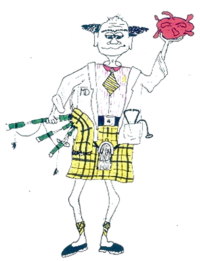 While McLeod syndrome is much rarer even than Chorea-acanthocytosis, it appears as if the methods of next generation sequencing allow more patients to be diagnosed. This is at least the impression of Adrian Danek at the Neurology Department at the University of Munich and of his colleagues at its neuromuscular unit (Friedrich Baur Institute). He had cared for a Munich patient and his brother almost thirty years ago but no other patients were diagnosed until 2018. In the last year, however, three new patients, men in their fifties who had presented with peripheral nerve and muscle issues, received a diagnosis of McLeod syndrome on the basis of genetic panel testing which was confirmed by immunohematological testing for the McLeod phenotype. While McLeod syndrome is much rarer even than Chorea-acanthocytosis, it appears as if the methods of next generation sequencing allow more patients to be diagnosed. This is at least the impression of Adrian Danek at the Neurology Department at the University of Munich and of his colleagues at its neuromuscular unit (Friedrich Baur Institute). He had cared for a Munich patient and his brother almost thirty years ago but no other patients were diagnosed until 2018. In the last year, however, three new patients, men in their fifties who had presented with peripheral nerve and muscle issues, received a diagnosis of McLeod syndrome on the basis of genetic panel testing which was confirmed by immunohematological testing for the McLeod phenotype.
Interestingly, the modern genetic methods thus have fully reversed the previous, classical approach that starts with blood bank typing of the patient's red cells. Prof. Danek was invited to present a review of the syndrome at the Institute's comprehensive annual neuromuscular seminar that covers new findings from the whole field of muscle and peripheral nerve disease and in 2019 it took place on November 16.
McLeod Syndrome: He pointed out the new patient's initial presentation with loss of leg muscle bulk (atrophy) that mirrored the original index patient’s. A major practical problem for McLeod patients in Germany in general concerns is the issue of banking their blood donations for the future use of themselves or of others affected by the syndrome.
The three new Munich patients are being comprehensively studied in order to better understand the protean manifestations of McLeod syndrome that may affect brain control of movements, including swallowing, and that may be associated with epilepsy, personality changes and involvement of the heart muscle. The latter situation makes regular cardiology consults necessary and the uncommon McLeod phenotype of blood may cause transfusion hazards. Finally, boys that suffer from septic granulomatosis, a disease of antimicrobial defense that is caused by mutations in a gene right next to the McLeod gene, may develop symptoms of the latter.
Because of medical advances and stem cell treatment this condition no longer seriously shortens the lives of those affected. If, however, their gene deletions also reach over into the McLeod gene they will most likely develop the latter condition's complications, and these patients must therefore also be closely monitored.
In a larger series of German McLeod patients, currently being written up by Dr. Kevin Peikert, previously in Dresden (where he was one of the organizers of the 9th International NA symposium), now Rostock, one or two of these patients will also be described.
A major practical problem for McLeod patients in Germany in general concerns the issue of banking their blood donations for the future use of themselves or of others affected by the syndrome. Through contacts with health insurers and with a small number of specialized blood banks we hope to solve the practical, mainly monetary and administrative issues of long-term storage and availability of such rare blood group preserves.
Prof. Danek's presentation was very well received and it may be predicted that an even larger number of McLeod cases will be identified in the near future. Both practical aspects as well as the enigmatic relationship to chorea-acanthocytosis will hopefully receive more attention and eventually may lead to a full understanding of both of these neuroacanthocytosis syndromes.
 |  |
Why NA research needs geneticists
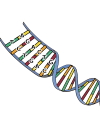 If you've ever wondered how the work of geneticists is essential to the ongoing research supported by the NA Advocacy, Gabriel Miltenberger-Miltenyi included this description of the geneticist's role as part of a presentation he gave in April. If you've ever wondered how the work of geneticists is essential to the ongoing research supported by the NA Advocacy, Gabriel Miltenberger-Miltenyi included this description of the geneticist's role as part of a presentation he gave in April.
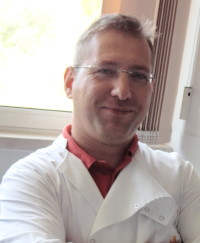 If you've ever wondered how the work of geneticists is essential to the ongoing research supported by the NA Advocacy, Gabriel Miltenberger-Miltenyi included this description of the geneticist's role as part of a presentation he gave in April. In the management of ChAc patients, the geneticist: If you've ever wondered how the work of geneticists is essential to the ongoing research supported by the NA Advocacy, Gabriel Miltenberger-Miltenyi included this description of the geneticist's role as part of a presentation he gave in April. In the management of ChAc patients, the geneticist:
- Creates a bridge between patients, physicians and molecular labs, basic scientists
- Supports genetic analyses
- Cares about each step (e.g. informed consent, human biological tissue handling)
- Not only provides results, but writes and signs clinical genetic reports (the responsibility of a physician) to patients world-wide
- Offers genetic counseling and answers questions of patients, family members, physicians and care givers (in different languages (e.g. Portuguese); personally or via Skype – depending on the situation;
- Provides predictive, prenatal testing, NIPD
- Leads and collaborates in research projects
Our thanks to Dr. Miltenberger-Miltenyi for helping us better understand his important work.
 |  |
PATIENT NEWS - Drew Smith ¦ Tracy Ghoris ¦ Manon Sauvigeau ¦ Susan Hills ¦ Bob Metzger ¦ Alex Irvine
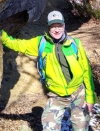 Read a selection of updates, including pictures and creative projects, from NA patients around the world. Read a selection of updates, including pictures and creative projects, from NA patients around the world.
1. Drew Smith, US
Drew Smith has sent us these words about his living in lockdown:
I listen to podcasts. Go for walks and ride my bike, and organize. I have organized my DVD collection and CDs, photos and videos. And I write poetry and watch TV (a lot of Netflix). I recommend these shows:
How to fix a drug scandal. Unnatural Selection; The Pharmacist; Tiger King.
Just been hanging. I play Rummikub online. Do you know how to play Rummikub?
If you are an optimist,
watch The Pharmacist.
If COVID coverage is too much to handle,
watch How to Fix a Drug Scandal.
If you want a new perception,
watch Unnatural Selection!
Before everything had shut down I was attending a fitness class at a neuro wellness program. I was going twice a week and boxing once a week. I also was bowling with friends and family.
Last April I started private sessions with a Rock Steady certified boxer 1-2 times a week. It is not an actual Rock Steady program but my instructor is aware of my condition and the goal is to improve strength and balance.
I also started an adaptive exercise class in a wellness program for people with brain injury/neurological conditions through Supportive Living Inc. They offer many different classes. I participate in a 1-hour group gym program 2 times a week with 1:1 training. It has been very helpful and I really like it. The video I sent you was with a trainer.
2. Tracy Ghoris
We've had quite a few nice spring days here in Ohio, and I took advantage of some of them by gingerly walking with my cane outside our house and enjoying nature. Viewing the rolling green hills, budding trees, blooming flowers, mooing cows, chirping birds, pretty butterflies, and many bees (with my being careful not to get stung!) has been refreshing and peaceful for me during our coronavirus stay-at-home orders. I even saw three wild turkeys, and the plumper one spread its colorful feathers--what a neat sight! Wouldn't you know it; I didn't have my camera with me then! I've always enjoyed nature, and it's always helped me deal with many things including my Neuroacanthocytosis.
My April Botox injections were postponed because my neurologist didn't want to take the chance of exposing patients to COVID-19. I'll now have Botox in June. At least I hope so because it's now wearing off and my spasms are becoming pronounced and somewhat painful. However, walking about and relaxing in nature will help me to some degree until my June injections.
I enjoyed reading the NA Patient Letter. Hope the Barcelona Symposium will be held in 2021!
3. Manon Sauvignon, Canada
Alex Irvine tells us about a patient in Canada:
I have been exchanging emails with Manon Sauvageu for the last six or so months -- and here are some of the things she has shared with me. She is very proud of herself for being able to walk without too much assistance; in fact, recently with no assistance at all. She puts that down to exercise, exercise and more exercise, walking along the corridors and in the basement of the home where she is staying. Her favorite pastimes include playing dominoes and doing word games with people in the Cooke residence where she currently lives in Montreal. As well as reading she likes to go swimming in the pool nearby (unfortunately this is something she cannot do at the moment because of the current pandemic and she really misses it.)
"I have my little life routine and I would not change anything for all the gold in world," Manon writes. "On this positive note I salute you and wish you well. You can me write anytime."
4. Susan Hills, England
Susan Hills in northern England brought us up to date with her life under lockdown:
We have done a cat jigsaw not long ago, good fun. I have not done much scrapbooking yet but like like doing crafts; it is something to do. Here’s a jigsaw I did a while ago plus one of my paintings and my cat Mimi!
5. Bob Metzger, Minnesota
We hear from Bob Metzger in Minnesota:
Part of my "managing life during this time" has been getting out for long hikes in woods on weekends.
6. Alex Irvine, London
In London Alex Irvine has been busy with jigsaws and computer cards plus she completed a special project:
The antique box came with 24 pages of instructions -- fortunately with excellent photos. We stopped counting the number of pieces to be slotted together. Now she’ll need some trinkets to put in the myriad drawers! She sends best wishes to all and hopes you are finding enjoyable things to pass the time. She will be delighted when she can return to the movie theatre. Her cat CoCo still sleeps at the end of her bed for most of the days and nights.
A selection of photos and artworks sent into Patient News...
 |  |
In Memoriam: Ed Ayala
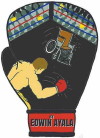 We were sad to receive news of the death of NA patient Ed Ayala. We were sad to receive news of the death of NA patient Ed Ayala.
Our beloved Edwin Ayala, known as Ed or Eddie to family and friends, 50, of Norton, Massachusetts, passed away June 17, after a long battle with Chorea-acanthocytosis. He was born June 25, 1969 to parents Pedro Ayala and Marta (Rodriguez) Ayala in Boston. Ed graduated from Brockton High School in 1987 and proudly served his country in the United States Army. He married the love of his life, Loida in 1995.
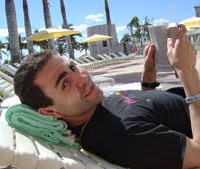 Our beloved Edwin Ayala, known as Ed or Eddie to family and friends, 50, of Norton, Massachusetts, passed away June 17, after a long battle with Chorea-acanthocytosis. He was born June 25, 1969 to parents Pedro Ayala and Marta (Rodriguez) Ayala in Boston. Ed graduated from Brockton High School in 1987 and proudly served his country in the United States Army. He married the love of his life, Loida in 1995. Our beloved Edwin Ayala, known as Ed or Eddie to family and friends, 50, of Norton, Massachusetts, passed away June 17, after a long battle with Chorea-acanthocytosis. He was born June 25, 1969 to parents Pedro Ayala and Marta (Rodriguez) Ayala in Boston. Ed graduated from Brockton High School in 1987 and proudly served his country in the United States Army. He married the love of his life, Loida in 1995.
Ed grew up in Dorchester and Brockton and like his father was a hardworking, honorable man.
He worked for UPS for almost 19 years.
Ed was more of a sports fan than an athlete but he was an avid runner, running 4 marathons including the Cape Cod Marathon. His greatest love was boxing. Ed was the biggest boxing fan and could tell you the stats of just about every boxer and all their fights. He reported on boxing matches locally for a company out of California as well as other websites. He was also a Certified Boxing Judge although he was never able to formally judge a match.
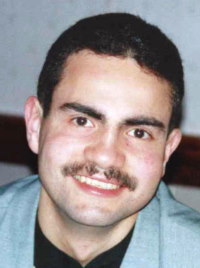 Since he was a small boy he always enjoyed writing. Despite much difficulty because of his disease he was able to write two books which were published. “A Puncher's Chance” is a wonderful work of fiction, and “Up Before the Count” is an autobiography telling his battle with Chorea-acanthocytosis. Since he was a small boy he always enjoyed writing. Despite much difficulty because of his disease he was able to write two books which were published. “A Puncher's Chance” is a wonderful work of fiction, and “Up Before the Count” is an autobiography telling his battle with Chorea-acanthocytosis.
Ed's wonderful sense of humor and love of life and family are what kept him going and helped him battle this terrible disease. He was a true inspiration to all who knew him.
Ed is survived by his wife Loida, their daughter Rosangela and her husband Steve, his mother Marta, his brothers Fernando and Pedro Jr., his sister Jacqueline, his beloved granddaughters Avah and Avianah and many nieces and nephews. He was predeceased by his father Pedro.
In lieu of flowers the family asks that donation be made in his name to www.naadvocacy.org
 |  |
A poem: Oh ChAc, Oh ChAc
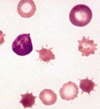 Oh ChAc, Oh ChAc is a poem written by one of our readers... Oh ChAc, Oh ChAc is a poem written by one of our readers...
Oh ChAc, Oh ChAc
Oh ChAc, Oh ChAc you are among the worst, You are not well versed nor rehearsed! You can change from day to day,
You are what you are, the doctors say!
Oh ChAc, Oh ChAc you are a rare genetic neurodegenerative disease, You are a movement disorder that is never at ease!
You are the reason for the involuntary movements of any extremity, You can cause dystonia, weight loss, unsteadiness, seizures and anxiety!
Oh ChAc, Oh ChAc you are studied by researchers and followed by a small group of doctors, You have a few known and unknown contributing factors!
You code on one allele from mom and on one allele from dad,
You are an autosomal recessive gene that is bad!
Oh ChAc, Oh ChAc your treatment is solely symptomatic,
As nothing about you is automatic!
You can be managed by meds to lessen movements and help with cognition, And you know that exercise, Botox and DBS show to be a great addition!
Oh ChAc, Oh ChAc you are so hard on some, While your sufferers are trying harder to overcome! You will not get the best of us, that is for sure. We will not stop “searching for clues to a cure!”
Oh ChAc, Oh ChAc you affect the way we talk, You affect the way we walk,
You affect the way we eat:
Oh how, we so want you to be beat!
Oh ChAc, Oh ChAc you are a mutation found in the human genome, But your protein function remains unknown!
Your cure is not an easy find because there are barriers to keep in mind. To those of us that have you, we are the rare kind!
Oh ChAc, Oh ChAc chorea is the dance of the body that looks so bizarre;
Oh ChAc, Oh ChAc acanthocytosis accounts for any red blood cell that is shaped as a spiky star. ChAc, you are the ultra-rare disease called: CHOREA-ACANTHOCYTOSIS!
 |
|
|
|